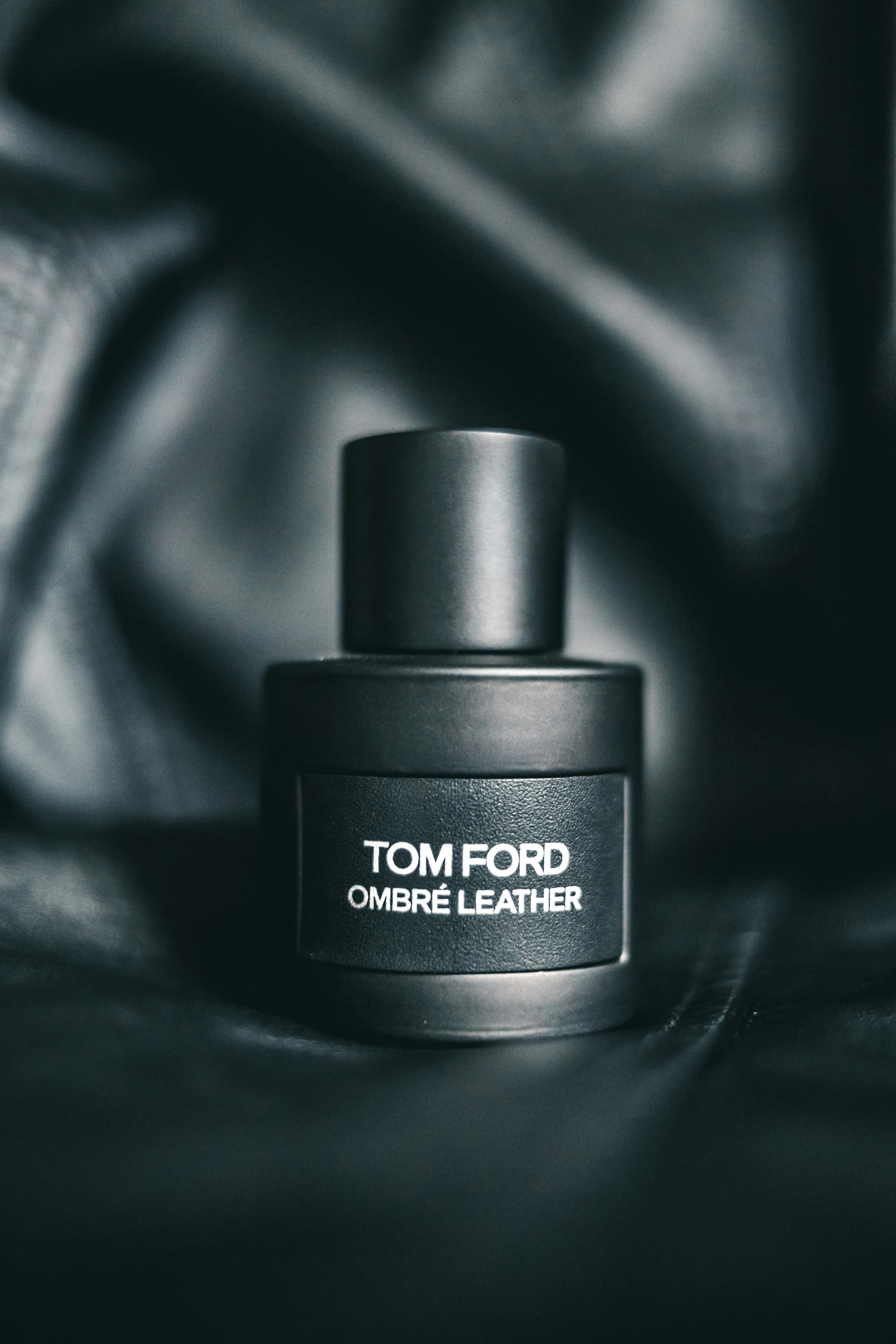
Exploring the World of Tom Ford: The Man and His Fragrance Journey
Introduction to Tom Ford
Tom Ford, an influential figure in the fashion and beauty industry, is known for his exceptional contributions as a designer, director, and perfumer. Born on August 27, 1961, in Austin, Texas, Ford exhibited a passion for aesthetics and design from an early age. He pursued his education at New York’s Fashion Institute of Technology, where he honed his skills and cultivated a deep understanding of fashion. His journey in the industry began in the late 1980s and was marked by several pivotal experiences that would shape his future.
Ford’s early career took off at the prestigious Italian luxury brand Gucci, where he was hired as a women’s wear designer in 1990. His innovative vision and commitment to sophistication quickly revitalized the brand, transforming Gucci into a global powerhouse. By the end of the decade, he had ascended to the role of creative director, a position that allowed him to further express his design aesthetics. Ford’s bold approach to fashion, characterized by sleek silhouettes and a luxurious feel, resonated with consumers, helping to redefine modern elegance.
In addition to his work with Gucci, Tom Ford launched his own luxury brand in 2005, which expanded beyond clothing to include high-end accessories and fragrances. His foray into the fragrance world was particularly notable, as it introduced signature scents that exuded sensuality and sophistication. Notable fragrances such as Black Orchid and Tuscan Leather are quintessential examples of his ability to capture elegance in olfactory form. Today, Ford’s name is synonymous with luxury, innovation, and a unique aesthetic that continues to influence the fashion and beauty landscape.
Through his personal ethos and professional endeavors, Tom Ford has established himself as a leading figure, inspiring both emerging designers and the global fashion community. His commitment to excellence and refinement remains a driving force behind his enduring legacy.
Early Career and Breakthrough
Tom Ford’s journey in the fashion industry began at a young age, when his passion for design led him to study architecture at Parsons School of Design in New York City. Following his graduation in 1990, he took his first significant step into the world of fashion by joining the American designer Cathy Hardwick. This pivotal role provided him with essential exposure to the industry’s inner workings and refined his understanding of aesthetics and branding.
Ford’s early experiences also included a stint at Perry Ellis, where he worked under iconic designer Marc Jacobs. Here, he honed his skills in both fashion design and marketing, learning how to effectively communicate a brand’s identity. However, it was his move to Milan in 1992 that marked the beginning of a transformative chapter in his career. He joined Gucci, a then-struggling brand, as a women’s ready-to-wear designer.
Recognizing the potential for revitalization within Gucci, Ford brought a fresh perspective and innovative ideas that dramatically altered the brand’s trajectory. His ability to merge sensuality with modern aesthetics while reinterpreting luxury attracted widespread attention. In 1994, he became the creative director of Gucci, leading the brand into a new era of success. Under his vision, Gucci experienced a remarkable turnaround, witnessing a surge in sales and global recognition.
Ford’s work at Gucci was characterized by bold designs, provocative marketing campaigns, and a keen understanding of consumer desires. He not only revamped the brand’s product offerings but also redefined its image, merging high fashion with accessibility. By continually pushing creative boundaries, he established himself as a leading figure in the fashion world, securing his legacy as one of the most influential designers of his generation.
The Transition to Fragrance
Tom Ford, renowned for his transformative impact on the world of fashion, made a pivotal decision to diversify his brand by entering the fragrance market. This transition was not merely an expansion of his product line; rather, it represented a strategic move to deepen the connection between his fashion aesthetic and personal branding. Ford’s motivations for venturing into fragrances stemmed from a desire to create a holistic luxury experience that encapsulated style and identity.
The fragrance sector offered an opportunity for Ford to express his artistic vision in a more intimate form. Through scents, he could communicate emotions and allure in ways that garments alone could not achieve. Recognizing the emotional resonance of fragrances, Ford sought to craft scents that reflected the same opulence and sophistication found in his clothing lines. This approach allowed him to engage consumers on a sensory level, making them feel as though they were part of his world.
Strategic decisions played a crucial role in Ford’s successful entry into the beauty and fragrance market. He carefully selected partnerships with experienced fragrance houses to develop formulations that aligned with his brand’s ethos. This collaboration ensured that the quality and olfactory experience of his fragrances matched the high standards associated with his fashion collections. Additionally, Ford’s marketing strategies emphasized exclusivity, luxury, and a bold lifestyle, effectively positioning his fragrances as must-have accessories for the modern individual.
Moreover, Ford’s debut fragrance, “Black Orchid,” was launched in 2006, setting the stage for the brand’s evolution in the beauty industry. The fragrance resonated well with consumers, garnering critical acclaim and solidifying his presence in the fragrance realm. Through this transition, Tom Ford not only expanded his brand but also redefined the parameters of luxury, making the world of fragrance a vital aspect of his creative empire.
Founding Tom Ford Beauty
Tom Ford Beauty emerged as a pivotal extension of the designer’s creative vision, marking the confluence of high fashion and luxury beauty. Founded in 2006, the brand was conceived as a platform to express Ford’s aesthetic sensibilities beyond the confines of apparel, allowing for the exploration of fragrance, cosmetics, and skincare. The inception of this beauty line was rooted in Ford’s desire to create a cohesive brand that encapsulated sophistication and allure, qualities that resonate deeply within his fashion creations.
The vision behind Tom Ford Beauty focused on elevating everyday beauty routines to an art form. Ford believed that beauty should not only enhance one’s appearance but also evoke emotion and confidence. This philosophy is reflected in the aesthetic of the products, which boast sleek packaging and high-quality formulations, designed to appeal to a discerning clientele who appreciate the finer things in life.
The branding strategy for Tom Ford Beauty was meticulously crafted to mirror the luxury and exclusivity associated with the designer’s fashion line. By positioning the beauty line within high-end retail environments, Tom Ford sought to create an immersive experience for consumers. This strategy enabled Ford to establish a strong brand identity that combines elegance with a modern twist, appealing to both loyal fashion followers and new customers alike.
Initial product offerings were diverse, yet each item exuded the signature Tom Ford style. The beauty line debuted with a selection of lipsticks, foundations, and fragrance products, all embodying the same level of quality that the fashion brand is renowned for. Notably, the introduction of his fragrance collection highlighted the seamless blending of art and consumerism, setting the stage for a successful venture that continues to thrive today.
The Impact of Tom Ford Perfumes
Tom Ford, a name synonymous with luxury and sophistication, has left an indelible mark on the fragrance industry. His perfumes are not merely products; they have revolutionized the way consumers perceive scents, targeting a diverse clientele and altering market dynamics. At the heart of Tom Ford’s success lies a strategic blend of artistry and marketing prowess, elements that have influenced fragrance trends worldwide.
The introduction of Tom Ford fragrances has sparked significant changes in consumer preferences, shifting the industry’s focus toward more daring and unique scents. Unlike many traditional perfumers who prioritize conventional olfactory profiles, Tom Ford’s perfumes often explore uncharted territories, offering bold, exotic combinations that engage the senses. This innovative approach has inspired many competitors to rethink their own fragrance lines, pushing the boundaries of creativity in scent formulation.
In addition to the unique scent profiles, Tom Ford’s distinctive marketing strategies have played a crucial role in elevating the brand. His ability to create a narrative around each fragrance not only enhances its desirability but also connects with consumers on a personal level. Each perfume is enveloped in a story that reflects Ford’s vision, thus appealing to the aspirational desires of high-end consumers. The aesthetically pleasing packaging and provocative advertising campaigns further differentiate Tom Ford perfumes, reinforcing their luxurious image.
Moreover, the economic impact of Tom Ford fragrances cannot be understated. The brand has generated substantial revenue within the luxury goods sector, mentoring up-and-coming perfumers and contributing to broader industry growth. By creating perfumes that embody sophistication and self-expression, Tom Ford has solidified his position at the forefront of the fragrance market. As a result, his brand continues to redefine industry standards and influences how fragrances are perceived in both cultural and economic contexts.
Signature Fragrances and Their Stories
Tom Ford has revolutionized the fragrance industry with a collection of signature scents that carry not just alluring aromas but also captivating narratives. Each fragrance serves as an embodiment of Tom Ford’s artistic vision and his unique interpretation of luxury and sensuality. One of the most iconic scents in his lineup is Black Orchid, launched in 2006. This unisex fragrance boasts a rich and complex blend of black truffle, bergamot, and black orchid, enveloped in a heart of floral notes and anchored by a base of dark chocolate and patchouli. Black Orchid is widely celebrated for its boldness and mystery, reflecting Tom Ford’s fascination with both the opulent and the seductive.
Another remarkable creation is Oud Wood, released in 2007 as part of the Private Blend collection. This fragrance captures the essence of the rare and luxurious oud wood, complemented by notes of spices, vanilla, and tonka bean. The inspiration behind Oud Wood showcases how the raw elements of nature can be transformed into an intricate and refined scent, appealing to those who appreciate understated elegance and sophistication. This fragrance tells a story of ancient traditions combined with modern desires, creating a universal appeal.
Furthermore, Neroli Portofino highlights Tom Ford’s ability to capture the freshness of the Mediterranean landscape. Launched in 2011, this fragrance is characterized by notes of neroli, citrus, and amber, evoking the essence of sun-soaked coastal retreats. Its story reflects a lively and carefree spirit, inviting wearers to escape into a tranquil world.
The narratives behind each of Tom Ford’s signature scents enrich the experience of wearing them, transforming a simple fragrance into a statement of identity and individuality. Through these iconic fragrances, Ford has established himself as a visionary perfumer, merging storytelling with artistry to create olfactory masterpieces that resonate with many.
Celebrity Endorsements and Popularity
The realm of fragrance is often intertwined with the influence of celebrity endorsements, and Tom Ford perfumes exemplify this dynamic brilliantly. From the outset, Ford harnessed the charisma and allure of high-profile figures to elevate his fragrance line’s visibility and desirability. The use of celebrities in marketing campaigns has proven instrumental in magnifying Tom Ford’s image, drawing attention to his scent offerings. This strategy not only showcases the luxurious nature of the perfumes but also aligns them with the lifestyles and aspirations of various consumer demographics.
One pivotal campaign involved collaborations with renowned figures, such as actors and musicians, whose personal brands resonate with Tom Ford’s target audience. These partnerships have featured not only striking visuals but also compelling storytelling, effectively capturing the essence of each fragrance. For instance, the campaign for ‘Tom Ford Black Orchid’ showcased a sensuous allure that parallels the celebrity persona, reinforcing the fragrance’s identity as both bold and sophisticated. Such campaigns have helped to solidify the perception of Tom Ford as a purveyor of high-end luxury.
The demographics of Tom Ford’s consumer base further illustrate the impact of these endorsements. Primarily targeting affluent individuals in the millennial and Gen Z cohorts, the fragrances appeal to those seeking exclusivity and unique olfactory experiences. By utilizing figures who embody contemporary cultural relevance, Ford successfully engages a younger audience while enticing older generations who appreciate his established legacy in the fashion industry. Thus, the intersection of celebrity endorsements and strategic marketing reflects not only Tom Ford’s innovative approach to fragrance but also the evolving landscape of consumer preferences.
Sustainability in Fragrance Production
The fragrance industry, while often glamorized, has begun addressing its environmental impact, and Tom Ford is at the forefront of this vital shift. Sustainability in fragrance production embodies a commitment to responsible sourcing and eco-friendly practices, pivotal in today’s beauty sector. Tom Ford, renowned for his luxury offerings, recognizes that sustainability is not merely a trend but a necessity aimed at safeguarding our planet.
One of the primary aspects of Tom Ford’s sustainability efforts is his dedication to using ethically sourced ingredients. This entails selecting natural materials that are harvested in a manner that does not deplete resources or harm ecosystems. By prioritizing responsible sourcing, the brand reduces its carbon footprint while supporting sustainable agriculture and local communities. This approach results in fragrances that not only smell exquisite but also represent a commitment to environmental stewardship.
In addition to ingredient sourcing, Tom Ford has taken strides in refining its production processes. The brand actively seeks to minimize waste through efficient manufacturing techniques, establishing a framework that promotes recycling and the use of biodegradable materials. Sustainable packaging has also become a focal point; Tom Ford incorporates materials that have a reduced environmental impact, thereby fostering greater accountability within the fragrance industry. This commitment aligns with a broader industry movement aimed at enhancing sustainability in beauty products.
Furthermore, Tom Ford’s initiatives extend to educating consumers about the importance of sustainability in fragrance purchases. By raising awareness regarding the environmental costs associated with traditional fragrance production, the brand encourages informed choices among its clientele. In this way, Tom Ford not only produces luxurious fragrances but also champions a more sustainable future, setting a precedent for the fragrance industry at large.
Conclusion: The Legacy of Tom Ford in Fragrance
Tom Ford has undeniably left an indelible mark on the fragrance industry through his innovative approach and unwavering dedication to quality. His journey began in the realm of fashion, where he revolutionized the aesthetics of modern luxury. However, it is in the domain of perfumery that Ford truly showcased his artistic flair and business acumen. By merging high-fashion sensibilities with contemporary fragrance development, he pioneered a new paradigm that many aspire to emulate.
Throughout his illustrious career, Ford launched a plethora of captivating scents that not only captivated the olfactory senses but also told a story. His fragrances, often characterized by bold, rich compositions, challenge the traditional boundaries between gender categories, creating unisex options that appeal to a broader audience. This approach has significantly influenced market trends, encouraging other brands to expand their perspectives on fragrance development.
Moreover, Tom Ford’s commitment to sustainability and ethical sourcing is another landmark aspect of his legacy. As consumers increasingly demand transparency and environmental responsibility, Ford’s brand exemplifies how luxury can harmonize with ethical practices. This forward-thinking approach positions his brand as a pioneer in adapting to the evolving preferences of the modern consumer.
Looking ahead, Tom Ford continues to explore new creative avenues within the fragrance sector. His ability to blend classic elements with innovative methods ensures that his fragrances remain relevant and sought after. The legacy of Tom Ford is not merely limited to his past achievements; it is a living, evolving entity that continues to push boundaries and redefine the landscape of luxury fragrance. As the industry evolves, Tom Ford’s influence will undoubtedly resonate for years to come, inspiring future perfumers and consumers alike.











